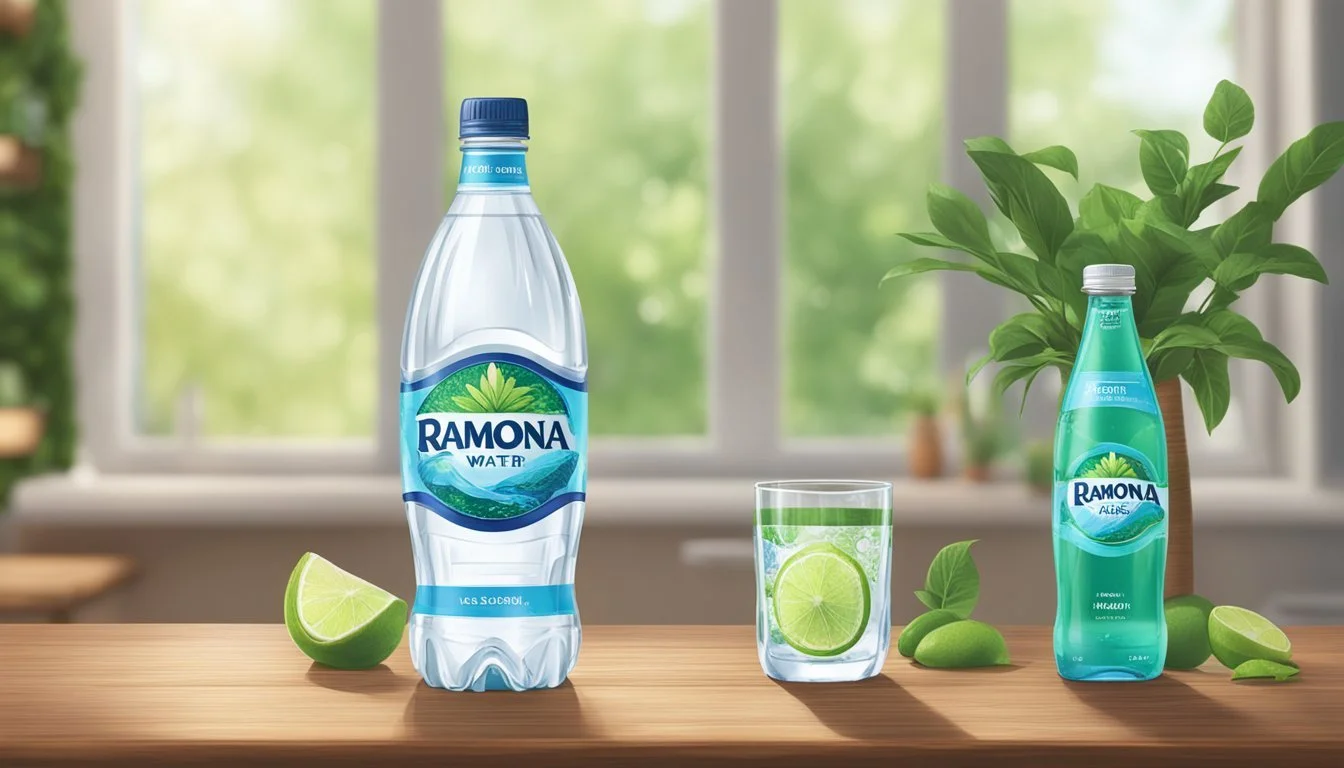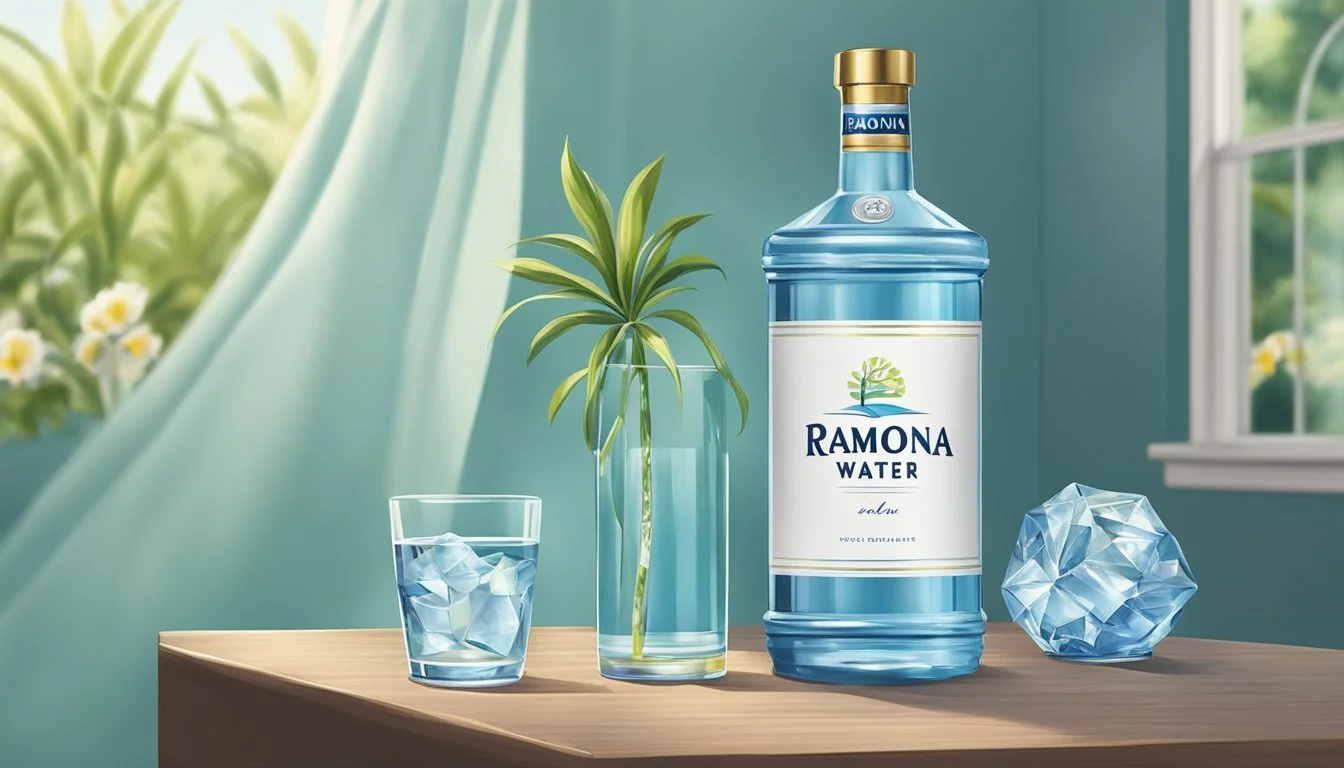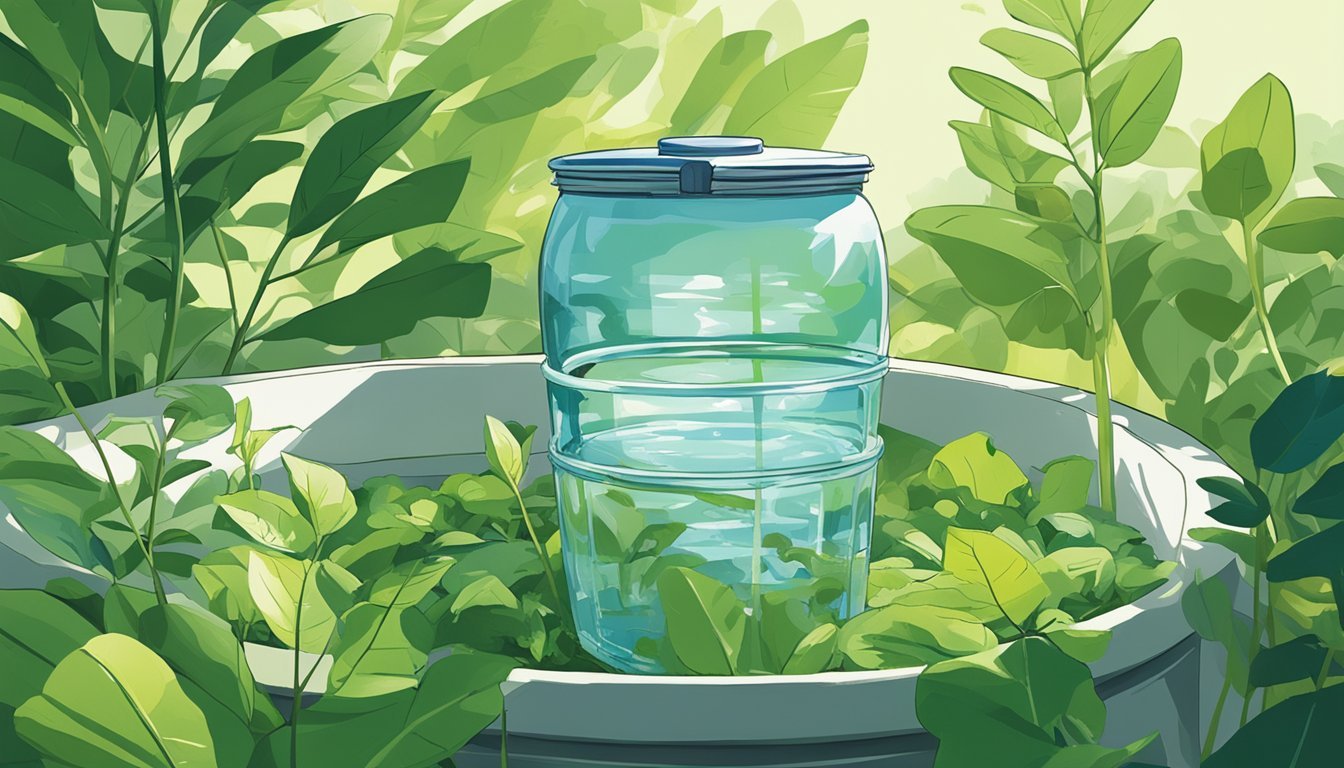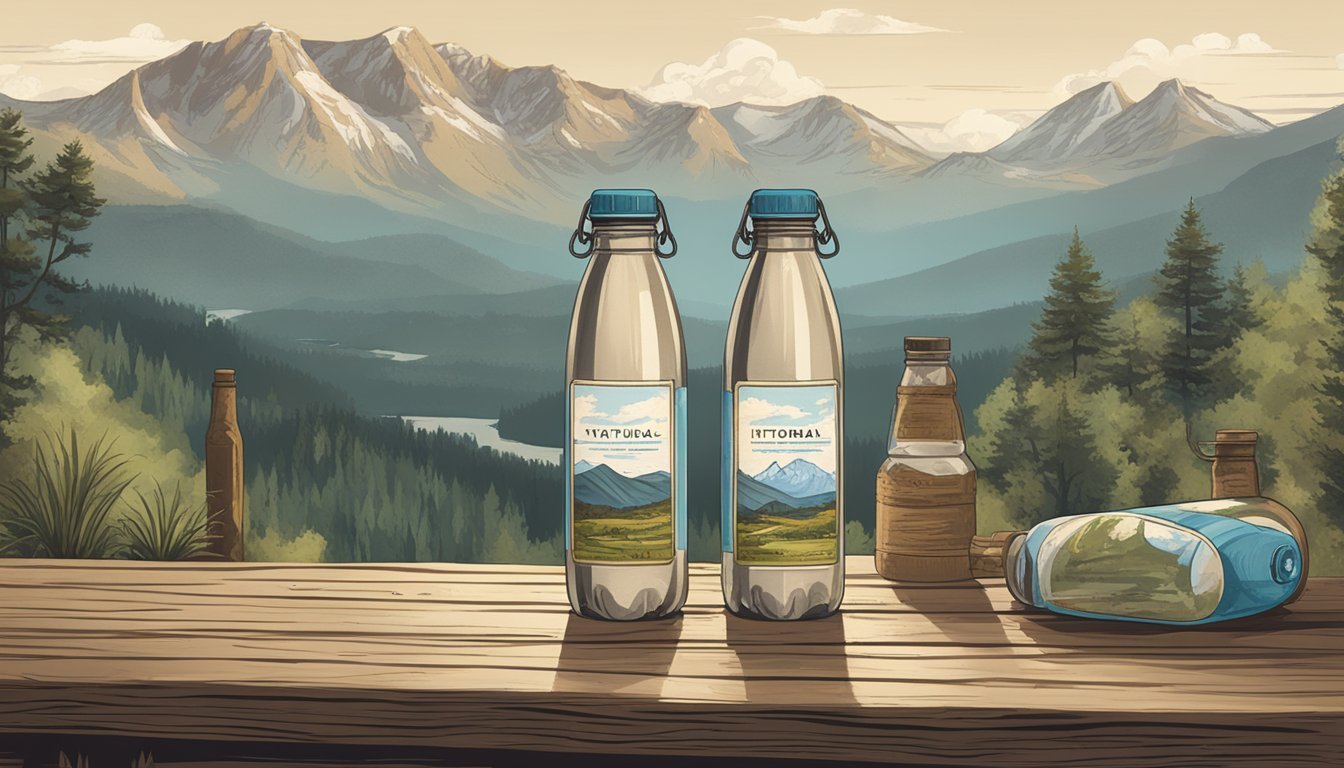The Well vs. Ramona
Bottled Water Showdown
Choosing the right bottled water can be a daunting task with many options available in today's market. The Well and Ramona bottled waters offer distinct characteristics that cater to different preferences. For those seeking a crisp and refreshing taste, Ramona stands out as the preferred choice.
Ramona is praised for its refreshing flavor and wide availability, making it a convenient option for daily hydration. The Well, on the other hand, is recognized for its purity and commitment to quality. Each brand has its loyal consumers who appreciate the unique attributes they offer.
For anyone evaluating bottled waters, understanding the taste profiles and availability is crucial. The decisive factor for many seems to be the crisp flavor that Ramona delivers, whereas The Well impresses with its pristine quality. This comparison aims to provide clarity, helping you decide which bottled water best fits your needs.
The Importance of Hydration
Hydration plays a critical role in maintaining health. Water is essential for nearly all bodily functions, from temperature regulation to nutrient transport. Proper hydration supports cognitive functioning and physical performance, aiding in concentration and reducing fatigue.
Beyond immediate effects, long-term hydration is crucial for overall health. It helps prevent kidney stones, urinary tract infections, and even some forms of chronic diseases. Water also supports the health of the skin, reducing dryness and improving elasticity.
Daily hydration needs vary based on factors such as age, gender, and activity level. Although the common recommendation is eight 8-ounce glasses per day, individual requirements can differ. Active individuals or those in hot climates may require more.
Benefits of Proper Hydration
Enhanced Physical Performance: Dehydration can impair physical abilities, causing muscle cramps and fatigue.
Cognitive Benefits: Proper hydration improves memory, mood, and concentration.
Efficient Digestion: Water aids in digestion and prevents constipation.
Detoxification: It helps flush out toxins through urine and sweat.
Symptoms of Dehydration include:
Dry mouth
Tiredness
Headaches
Dizziness
Dark urine
Maintaining hydration is not only about drinking water. Foods like fruits and vegetables also contribute to daily water intake. Options such as watermelon, cucumbers, and oranges are particularly hydrating.
Hydration Tips:
Carry a water bottle.
Drink water before, during, and after exercise.
Add a slice of lemon or lime for flavor if plain water is unappealing.
Proper hydration is essential for maintaining both short-term and long-term health, making it a fundamental aspect of daily life.
Origin of Water: The Well and Ramona Compared
The source of bottled water significantly impacts its taste, quality, and sustainability. Both The Well and Ramona have distinct origins that define their characteristics.
Natural Springs vs Groundwater
The Well sources its water primarily from deep groundwater reserves. This groundwater is accessed through wells that tap into underground aquifers. These sources are naturally filtered through layers of rock and sediment, which provide a unique mineral profile to the water.
Ramona relies on natural springs for its water. These springs are naturally occurring points where water flows to the surface from an aquifer. The water from natural springs often requires minimal treatment, preserving its natural taste and mineral content.
Sourcing and Water Source
The Well meticulously sources its groundwater from protected, deep wells. These wells are regularly tested to ensure the purity and safety of the water extracted. The sourcing emphasizes sustainability, as drawing water from aquifers is managed to prevent depletion.
Ramona's approach to sourcing involves tapping into pristine natural springs. The springs are often located in remote, uncontaminated areas, ensuring high-quality water. Ramona prides itself on maintaining the natural ecosystem surrounding these springs, ensuring long-term sustainability and minimal environmental impact.
Taste Profile Analysis
"The Well" and Ramona offer distinct experiences when it comes to taste. Key differences are found in their mineral content and the aftertaste, which greatly affect overall enjoyment.
Mineral Content and Taste
Mineral content is a crucial factor that defines the taste profile of bottled water. Ramona water contains beneficial minerals like calcium and magnesium in small amounts. These minerals contribute to a crisp flavor that many consumers appreciate.
In contrast, "The Well" is known for having a subtle mineral presence. This results in a cleaner taste that does not overwhelm the palate. Those who prefer a more neutral flavor might find "The Well" more suited to their taste preferences.
Consumers concerned with natural additives will be pleased to know that both brands avoid artificial additives and sweeteners. This ensures a more natural and clean-tasting water experience for the drinkers.
Aftertaste and Cleanliness
Aftertaste is another significant aspect when choosing bottled water. Ramona water is often praised for its lack of lingering aftertaste, providing a refreshing and clean mouthfeel. This makes it an ideal choice for those who want a straightforward hydration experience without any residual flavors.
On the other hand, "The Well" also boasts a clean and pure taste profile. However, some users have noted a slight sweetness in the aftertaste, possibly due to trace minerals. This slight aftertaste does not detract from its overall clean sensation and might appeal to those who enjoy a hint of mild flavor.
Both brands emphasize high water quality, ensuring that the water remains free from contaminants and maintains its taste integrity from source to bottle.
Water Quality and Purity
The quality and purity of bottled water are critical factors in determining its overall value. Key aspects include the types of filtration techniques used and the rigorousness of quality control and certification processes each brand employs.
Filtration Techniques
The Well utilizes a multi-step purification process that includes reverse osmosis and UV treatment. These methods remove impurities and ensure a clean, pure taste. The reverse osmosis process forces water through a semi-permeable membrane, filtering out contaminants like bacteria and dissolved solids.
Ramona, on the other hand, sources its water from natural springs, relying on natural filtration through underground rock formations. This process retains essential minerals and electrolytes, providing a naturally balanced pH level. While not as controlled as laboratory techniques, this method offers a unique mineral profile that some consumers prefer.
Quality Control and Certification
The Well adheres to strict quality control standards, frequently testing water samples to comply with EPA guidelines. This ensures that any potential contaminants are below the permissible levels. Additionally, the brand holds certifications for safety and purity, such as NSF International and the Safe Drinking Water Act compliance.
Ramona also maintains high standards, with water quality regularly tested for contaminants and mineral content. Sourced from pristine springs, it undergoes periodic evaluations to meet regulatory standards. While natural filtration methods are less controlled, the certification and compliance efforts help assure consumers of its purity and safety.
In both cases, quality control measures ensure that the water delivered is safe and clean, though the methods and mineral content can vary significantly between the two brands.
Health and Nutritional Considerations
Both The Well and Ramona offer bottled waters with various health and nutritional benefits that are crucial for an informed choice. Below, different aspects such as essential minerals, pH levels and acidity, and hydration efficiency are analyzed.
Essential Minerals
Ramona water stands out for its mineral content. It contains small amounts of beneficial minerals like calcium and magnesium, which are important for bone health and muscle function. The absence of artificial additives, sweeteners, and preservatives also underscores its focus on natural purity.
In contrast, The Well may have a different mineral profile. It is important to review the label for specific amounts of calcium, magnesium, and other essential minerals. Comparing these details can help identify which brand better meets dietary needs.
Calcium Levels:
Ramona: Beneficial amounts
The Well: Check label
Magnesium Levels:
Ramona: Present
The Well: Check label
PH Levels and Acidity
The pH level of water can impact its taste and how it interacts with the body. Ramona maintains a neutral pH level around 7.0, making it neither too acidic nor too alkaline. This neutrality is ideal for maintaining a balanced diet.
The Well might offer water with varying pH levels, which can provide different experiences for consumers. Some may prefer slightly alkaline water due to potential health benefits, such as improved hydration and reduced acid reflux.
pH Levels:
Ramona: ~7.0 (neutral)
The Well: Varies, check specific product
Hydration Efficiency
Hydration efficiency refers to how effectively the water quenches thirst and contributes to overall hydration. Both brands aim for high hydration efficiency, but methods vary. Ramona's minimal processing helps retain natural properties that bolster hydration.
The Well might employ advanced filtration techniques, which can sometimes enhance or reduce hydration efficiency. The presence of essential minerals also influences how well the body absorbs water, making the mineral content significant.
Factors for Hydration:
Ramona: Natural water, minimal processing
The Well: Advanced filtration, varies by product
In summary, understanding these factors can aid in choosing the bottled water that best supports health and nutritional needs.
Environmental Impact
When comparing the environmental impact of The Well and Ramona bottled water brands, it is crucial to consider both the materials used in their bottles and their approach to eco-friendly packaging. These factors significantly affect their overall sustainability and carbon footprint.
Bottle Materials and Sustainability
The Well uses primarily plastic bottles, which are typically made from PET (polyethylene terephthalate). PET plastic is lightweight and recyclable but often ends up in landfills due to low recycling rates. Plastic production also generates substantial carbon emissions, contributing to pollution.
Ramona, on the other hand, offers a mix of plastic and glass bottles. Glass bottles are more sustainable because they are reusable and have a higher recycling rate. Glass production, however, requires more energy compared to plastic, leading to higher carbon emissions during manufacturing. Still, glass remains a more environmentally friendly option due to its reusability and reduced contamination in recycling streams.
Eco-Friendly Packaging
The Well emphasizes eco-friendly packaging by using labels and caps made from recycled materials. They also promote the use of larger, family-sized bottles to reduce plastic waste per liter of water consumed.
Ramona takes additional steps towards sustainability by using biodegradable labels and opting for minimal packaging. They focus on reducing the overall weight of their bottles to lower transportation emissions.
Both brands have introduced initiatives to encourage consumers to recycle and reuse bottles. Programs such as bottle return schemes help minimize waste and incentivize sustainable consumer behavior.
Considering these aspects, Ramona's approach appears more comprehensive, with a strong emphasis on reducing single-use plastics and promoting recyclable and reusable materials. Nonetheless, both brands are making strides towards reducing their environmental footprint through innovative packaging solutions.
Comparing Water Brand Histories
Both The Well and Ramona have established their reputations in the bottled water industry, but their paths to market prominence and consumer trust have unique characteristics.
Market Presence and Reputation
The Well entered the bottled water market in the early 2000s. It quickly gained recognition due to its commitment to purity and environmental sustainability, often packaging its water in glass bottles. This eco-friendly approach appeals to upscale markets and health-conscious consumers.
Ramona, in contrast, focuses on affordability and widespread availability. Founded in the late 1990s, it uses recyclable plastic bottles, positioning itself as a sustainable option in a market dominated by plastic-packaged water. Ramona has a strong presence in both grocery stores and online marketplaces.
Despite different market strategies, both brands emphasize sustainability, with The Well leaning towards premium markets and Ramona targeting a broader audience.
Consumer Trust and Preferences
Consumer Trust for The Well is rooted in its certifications and adherence to stringent quality controls. The brand's emphasis on using natural spring sources and avoiding additives resonates with consumers looking for purity and natural taste.
Ramona, meanwhile, builds trust through transparency and competitive pricing. It offers detailed information about its water sources and purification processes, gaining favor among budget-conscious consumers who also value environmental responsibility.
Preferences between the two brands can vary significantly. Some consumers prefer the clean, crisp taste of The Well, appreciating its less mineral-heavy profile. Others lean towards Ramona for its affordability and the subtle mineral tang it offers. Each brand caters to different aspects of consumer preferences, shaping their unique market positions.
More About The Well
Cascade Mountain vs The Well: Which Bottled Water is Better?
Hawaiian Springs vs The Well: Which Bottled Water is Better?
Icelandic Glacial vs The Well: Which Bottled Water is Better?
Mountain Valley Spring Water vs The Well: Which Bottled Water is Better?
Nestle Pure Life vs The Well: Which Bottled Water is Better?
Richard's Rainwater vs The Well: Which Bottled Water is Better?
The Well vs Kirkland Signature: Which Bottled Water is Better?
The Well vs Talking Rain AQA: Which Bottled Water is Better?
Whole Foods Italian Still Mineral water vs The Well: Which Bottled Water is Better?





